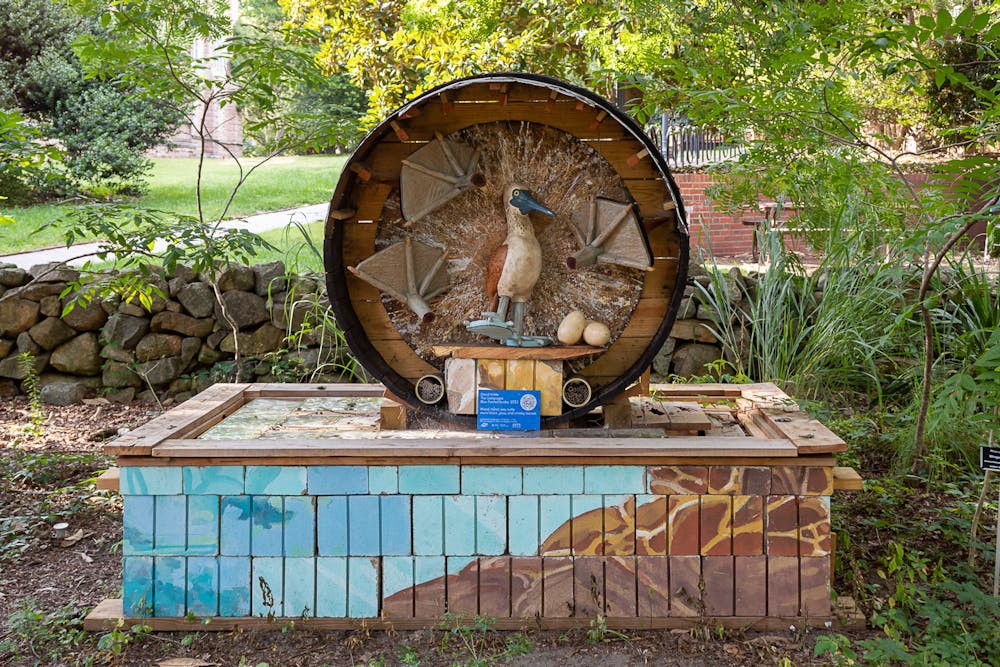Blue-footed boobies, Galapagos tortoises and marine iguanas can now all be found on UNC's campus — as new art installations.
Last spring, a series of large sculptures were installed to mark the 10-year anniversary of UNC’s Center for Galapagos Studies.
The Center for Galapagos Studies runs the Galapagos Science Center (GSC), a joint effort between UNC and the Universidad San Francisco de Quito. The GSC is based on San Cristobal Island, off the coast of Ecuador, and houses several laboratories.
The goal of the anniversary project is to honor the wildlife and biodiversity of the Galapagos Islands.
“Not everybody has the opportunity to get to the Galapagos, so we wanted to try to bring that back here to raise awareness and to highlight the beauty of the Galapagos on campus,” Kelly Weaver, the director of external affairs and communications for the Center for Galapagos Studies, said.
Weaver said the purpose of the sculptures is to raise awareness about the research center and the education opportunities and outreach it provides. The sculptures are made out of recycled and sustainable materials that celebrate the geography of the Galapagos.
“By using these upcycled materials to highlight that it’s important to be mindful of what we’re using and that the Earth is worth protecting,” Weaver said.
The sculptures — four in total — were placed in various locations throughout UNC's campus.
The “Blue-Footed Booby,” made by local artist David Hinkle, sits in the Coker Arboretum, near Spencer Residence Hall.



